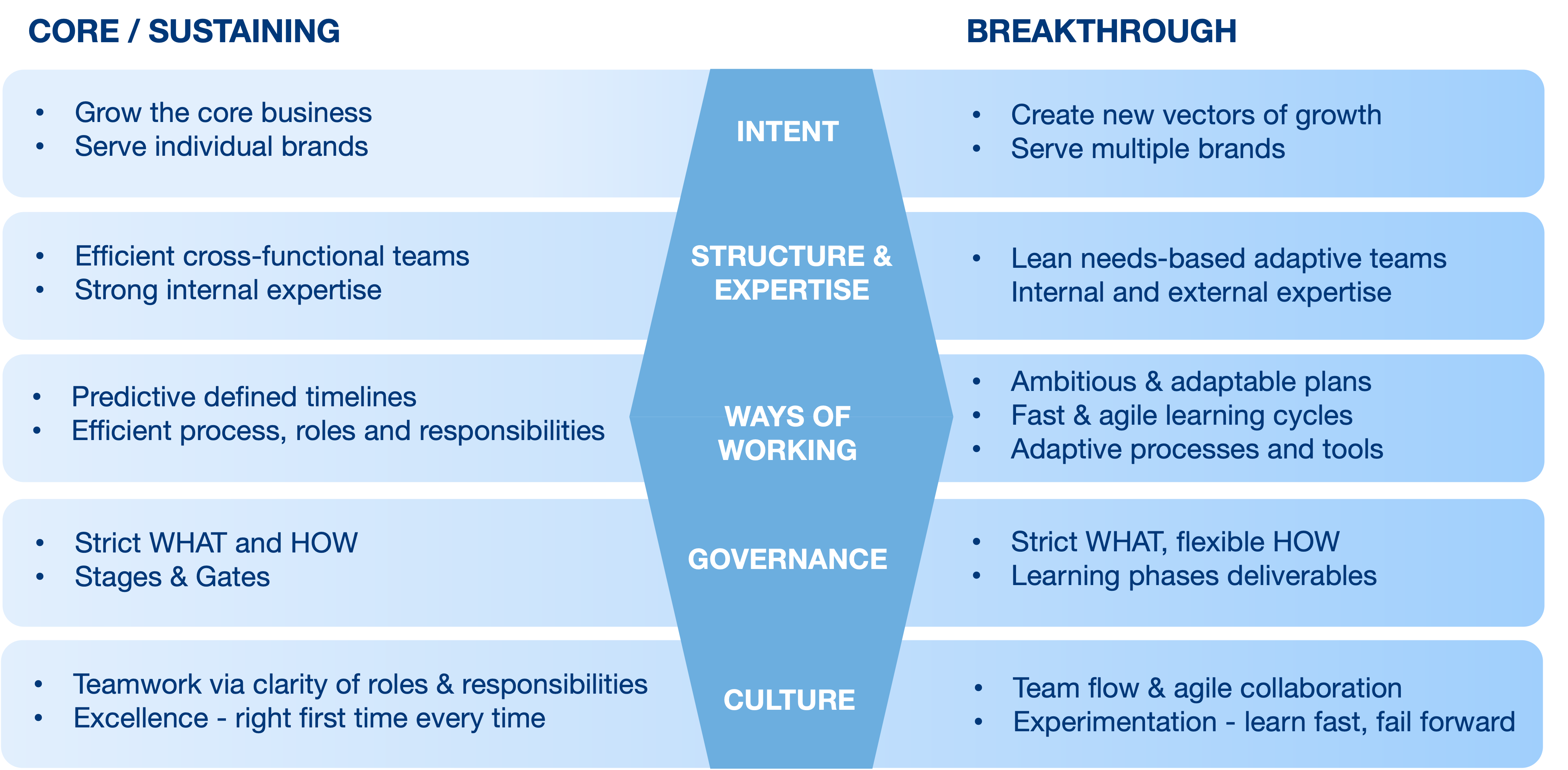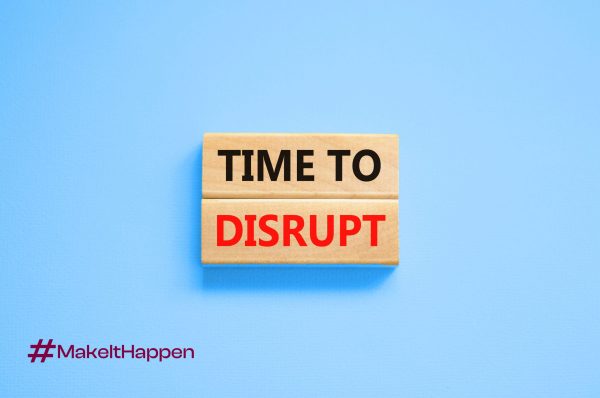The key to sustained growth relies on an ability to innovate reliably and sustainably. At Skarbek, we are embarking on a journey to unravel the mystery behind what makes the best excel at this. Leveraging our experts’ vast experience and highlighting attributes from our Innovation Fitness Index, we aim to provide unique insights into some of the core factors impacting innovation success. Today’s article is focused on the specific Innovation Fitness Index attribute “Organising for Breakthrough Innovation”.
Many of our clients face the same imperative and challenge. How to lead an organisation able to both design and launch core “bread & butter” sustaining innovation with excellence day in day out, AND uncover, invent and launch the innovation platforms that will disrupt tomorrow, build your competitive position and future-proof your business? Can you actually excel at both?

Most of the industry-leading companies we work with are some way along on the journey to building mastery and excellence in designing and delivering the core sustaining innovation they need to meet their short term growth needs (extending brand offerings in known technology / consumer / business model spaces). However, many struggle with how to tackle uncovering, experimenting and bringing to life the Disruptive Innovation their long-term growth goals demand. Disruptive Innovation is hard! It is about inventing the future, tackling new challenges, complex problems requiring new capabilities and expertise, and always involving a high volume of iteration and learning. As many have learnt through trial and often costly experiences, classical core sustaining innovation operating models (involving high process, rigorous stage gates, siloed functional structures etc) often do not work in the Disruptive space.
Why should Breakthrough innovation be treated differently?
The temptation is to look to leverage often pre-existing operating models (typically designed to deliver “bread & butter” innovation predictably, repeatedly, with right-first-time excellence) to run Disruptive Innovation projects. However tempting as this may be – this approach invariably fails. Why?

By nature, Breakthrough projects…
- tackle new tough challenges – New consumer / new category / new technology space / new business model etc.
- are about creating the future! A lot is unknown, the path will be non-linear
- are complex, involving need for high iteration and learning
- require access to new capabilities and expertise often not available internally
- take longer and a unique path to develop, validate and scale-up
A single isolated intervention (like creating a new Disruptive Innovation team) won’t cut it! A differentiated Operating Model is needed to address the multiple factors that will affect ability to innovate in new disruptive spaces. This new model should enable organisations to tackle and adapt with agility to the unknown challenges ahead – future-proofing your innovation and growth plans.
How differentiated should your Disruptive Innovation Operating Model be? Here are some thought starters for what it should enable.

What Could This New Operating Model Look Like?
Some of the constitutive elements of a new operating model could include (non-exhaustive examples):
Where Do I Start?
Unlocking Disruptive Innovation is hard, and uncovering and implementing the systems and mechanisms that will unleash it not always straightforward or standard across companies and industries. Succeeding in this space takes intent, and careful considerations of all of the elements of the operating model that will play a role of how effectively your strategy will come to life and deliver the results you expect. This cannot be improvised!
At Skarbek, we leverage hands-on industry experience and expertise to go beyond copy-paste concepts and help our clients design the Operating Model solutions that uniquely suit their needs. We then assist in piloting and activating novel operating models, and support project kick-offs to accelerate impact. This approach has seen our clients accelerate the progress of game-changing breakthrough innovation – a recent case study can be found here.
Want to learn more? Get in touch today to speak with one of our innovation experts – enquiries@skarbek.com
Structure and Resources is just one element of Skarbek’s Innovation Fitness Index, a holistic diagnostic tool, helping clients to assess how well their organisation is poised to drive innovation today. This powerful tool goes beyond conventional assessments, offering a comprehensive analysis of your organisation’s readiness to deliver innovation. It allows clients to unlock valuable insights that can shape strategy, enhance processes and elevate their innovation game.

